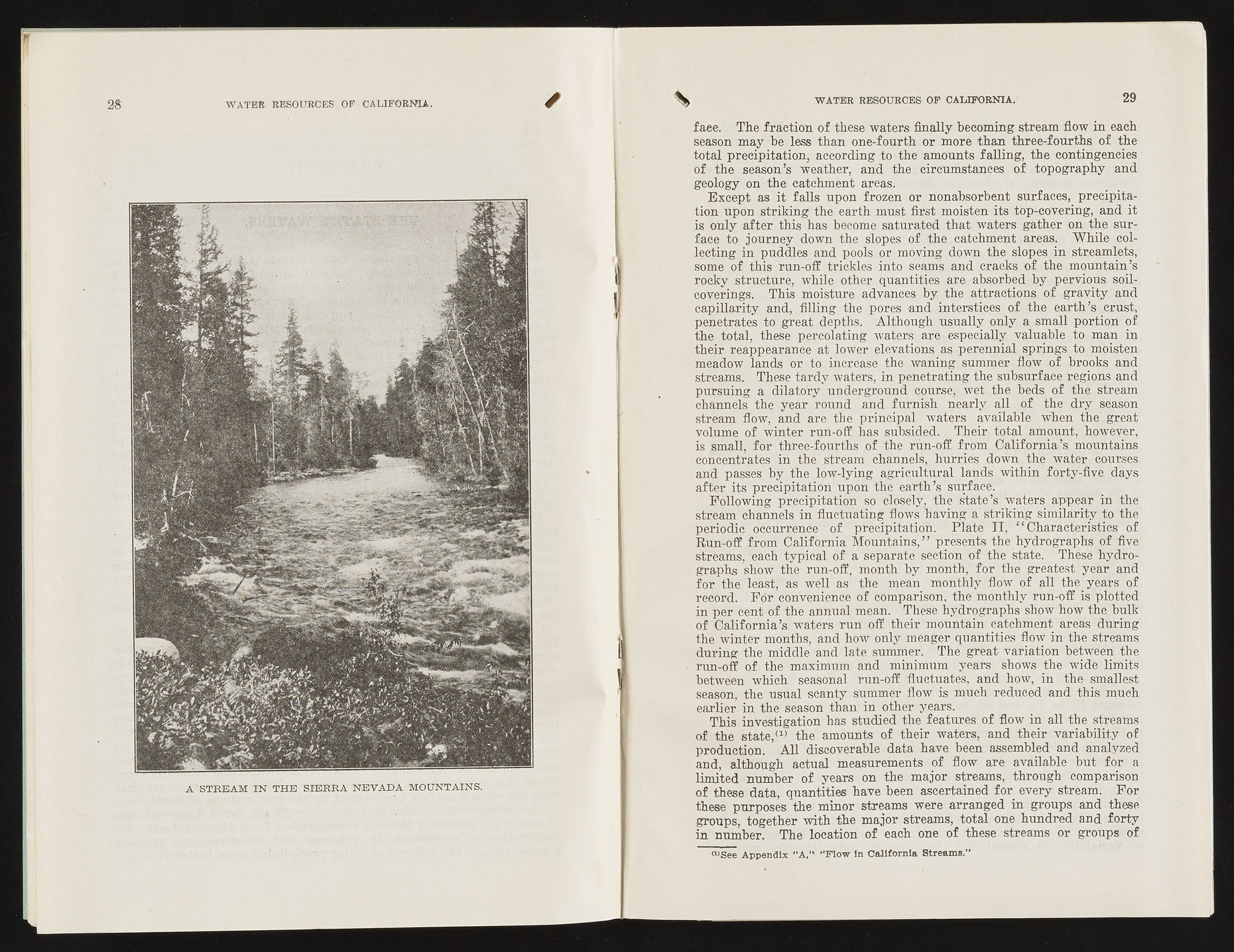Copyright & Fair-use Agreement
UNLV Special Collections provides copies of materials to facilitate private study, scholarship, or research. Material not in the public domain may be used according to fair use of copyrighted materials as defined by copyright law. Please cite us.
Please note that UNLV may not own the copyright to these materials and cannot provide permission to publish or distribute materials when UNLV is not the copyright holder. The user is solely responsible for determining the copyright status of materials and obtaining permission to use material from the copyright holder and for determining whether any permissions relating to any other rights are necessary for the intended use, and for obtaining all required permissions beyond that allowed by fair use.
Read more about our reproduction and use policy.
I agree.Information
Digital ID
Permalink
Details
Member of
More Info
Rights
Digital Provenance
Publisher
Transcription
WATER RESOURCES OF CALIFORNIA. A STREAM IN THE SIERRA NEVADA MOUNTAINS. WATER RESOURCES OF CALIFORNIA. 29 faee. The fraction of these waters finally becoming stream flow in each season may he less than one-fonrth or more than three-foUrths of the total precipitation, according to the amounts falling, the contingencies of the season’s weather, and the circumstances of topography and geology on the catchment areas. Except as it falls upon frozen or nonabsorbent surfaces, precipitation upon striking the earth must first moisten its top-covering, and it is only after this has become saturated that waters gather on the surface to journey down the slopes of the catchment areas. While collecting in puddles and pools or moving down the slopes in streamlets, some of this run-off trickles into seams and cracks of the mountain’s rocky structure, while other quantities are absorbed by pervious soil-coverings. This moisture advances by the attractions of gravity and capillarity and, filling the pores and interstices of the earth’s crust, penetrates to great depths. Although usually only a small portion of the total, these percolating waters are especially valuable to man in their reappearance at lower elevations as perennial springs to moisten meadow lands or to increase the waning summer flow of brooks and streams. These tardy waters, in penetrating the subsurface regions and pursuing a dilatory underground course, wet the beds of the stream channels the year round and furnish nearly all of the dry season stream flow, and are the principal waters available when the great volume of winter run-off has subsided. Their total amount,,, however, is small, for three-fourths of the run-off from California’s mountains concentrates in the stream channels, hurries down the water courses and passes by the low-lying agricultural lands within forty-five days after its precipitation upon the earth’s surface. Following precipitation so closely, the state’s waters appear in the stream channels in fluctuating flows having a striking similarity to the periodic occurrence of precipitation. Plate II, “ Characteristics of Run-off from California Mountains,” presents the hydrographs of five streams, each typical of a separate section of the state. These hydrographs show the run-off, month by month, for the greatest year and for the least, as well as the mean monthly flow of all the years of record. For convenience of comparison, the monthly run-off is plotted in per cent of the annual mean. These hydrographs show how the bulk of California’s waters run off their mountain catchment areas during the winter months, and how only meager quantities flow in the Streams during the middle and late summer. The great variation between the run-off of the maximum and minimum years shows the wide limits between which seasonal run-off fluctuates, and how, in the smallest season, the usual scanty summer flow is much reduced and this much earlier in the season than in other years. This investigation has studied the features of flow in all the streams of the state,® the amounts of their waters, and their variability of production. A ll discoverable data have been assembled and analyzed and, although actual measurements of flow are available but for a limited number of years on the major streams, through comparison of these data, quantities have been ascertained for every stream. For these purposes the minor streams were arranged in groups and these groups, together with the major streams, total one hundred and forty in number. The location of each one of these streams or groups of WSee Appendix "A,” “Flow in California Streams.”

